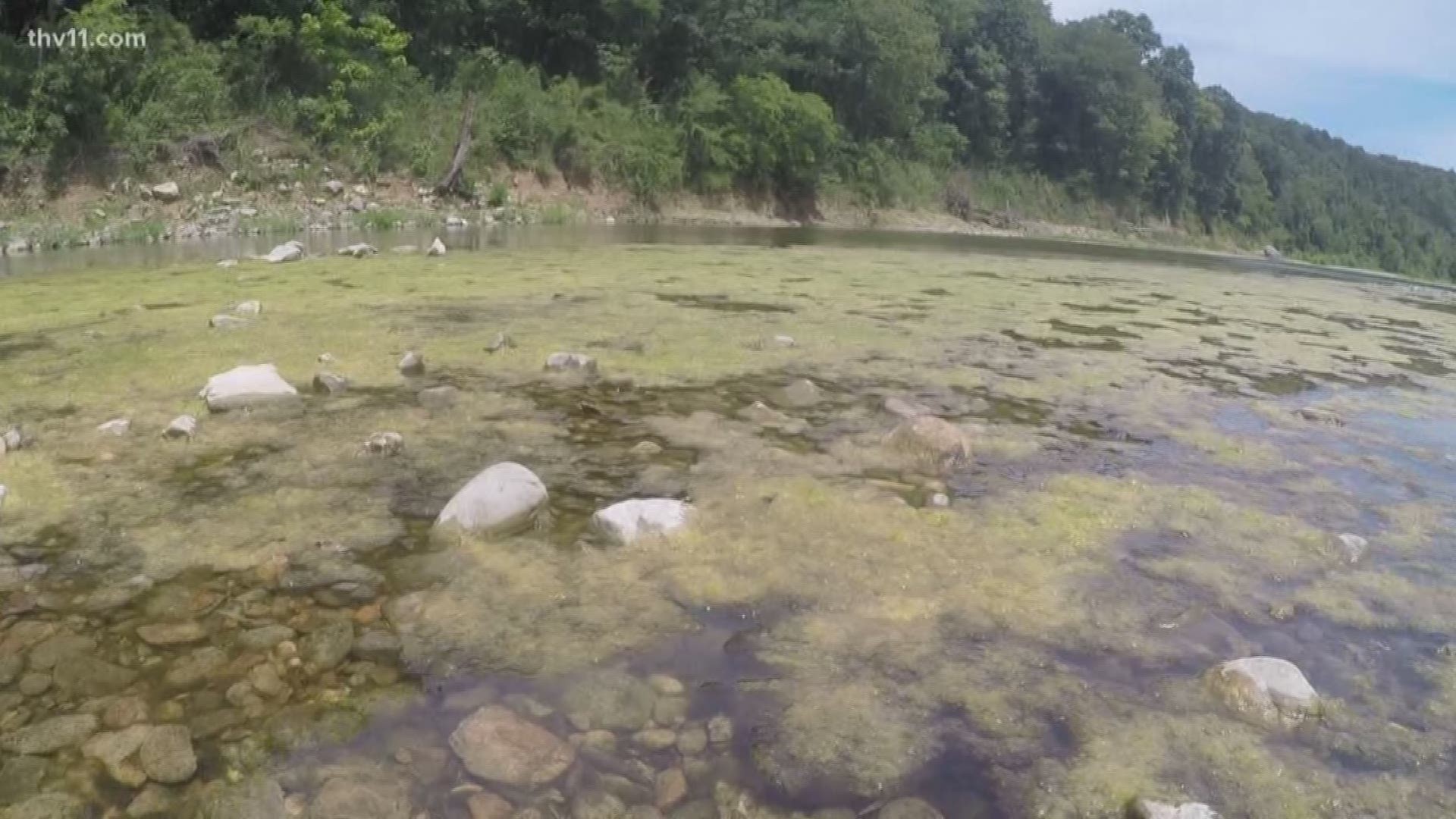HARRISON, Ark. (KTHV) - The Buffalo River continues to experience significant algal growth this summer as hot and dry conditions persist. Most algae are harmless, but certain types can make people and pets sick if they swim in or drink water in close proximity to the algae.
“We've always had algae blooms, but just the size of some of the ones that we're seeing now may be abnormal but we're trying to find out,” said Shawn Hodges, a ranger and ecologist for the National Park Service, overseers of the river.
This year a species of blue-green algae (also called cyanobacteria) has been identified within the river. This species has the potential to produce cyanotoxins and a few visitors have reported illnesses after swimming in areas with algae this month
“So far all the illnesses that have been reported have not come back as being linked to the algae or the water in the buffalo,” Hodges said. “We’re just sharing the information we have to everyone and letting them know we are monitoring the situation.”
The National Park Service has been working closely with the US Public Health Service and the Arkansas Department of Health to determine the causes of the reported illnesses. Next week, inspectors will begin more extensive testing options with the Centers for Disease Control and Prevention.
Meanwhile, stay on the safe side while in the water.
“If you come across algae mats, just paddle around them,” Hodges said. “When they’re on the edge of the river, they'll be a lot easier to stay away from. It's not really deep enough for swimming, so just take caution, walk around and get out into the deeper water.”
Hodges also stressed that the water is safe across the entire park and there is no reason to change or alter plans to visit the river.
More from the NPS statement:
We are also sampling the river to determine the abundance of potentially harmful algae and cyanotoxins. On July 17, Arkansas Department of Environmental Quality (ADEQ) sampled four sites in the middle and lower districts of the river, including downstream of Spring Creek and at Dillard’s Ferry, for two common cyanotoxins (Microcystin and Cylindrospermopsin). The values in the Buffalo River were below the detectable thresholds of 0.1 micrograms/L for Microcystins and 0.04 micrograms/L for Cylindrospermopsin. These values are far below the EPA draft recreation values for concern for these toxins (4.0 micrograms/L for Microcystins and 10.0 micrograms/L for Cylindrospermopsin).
Visitors are urged to remain aware of their surroundings and avoid swimming in areas with heavy algae coverage. If children are present, ensure they do not allow water into their mouth or swallow water from the river or tributaries. Visitors should practice CDC recommendations for purifying water used for consumption. Find more information here.
The NPS and USPHS encourage visitors who believe they or their animals have become ill after exposure to algae in the Buffalo River, to report the illness during business hours to the ADH Communicable Disease Nurse at 501-537-8969. After hours, people can call the ADH Emergency Communication Center at 1-800-651-3493. Visitors can also report illnesses to the NPS Epidemiology Branch Chief for the Office of Public Health via email.
Park staff continues to work with other state and federal agencies to address this issue. As more information becomes available, it will be shared widely. Visitors can help this effort by reporting algae along the river via the ADEQ algae reporting forms either on their app or via the web at:

